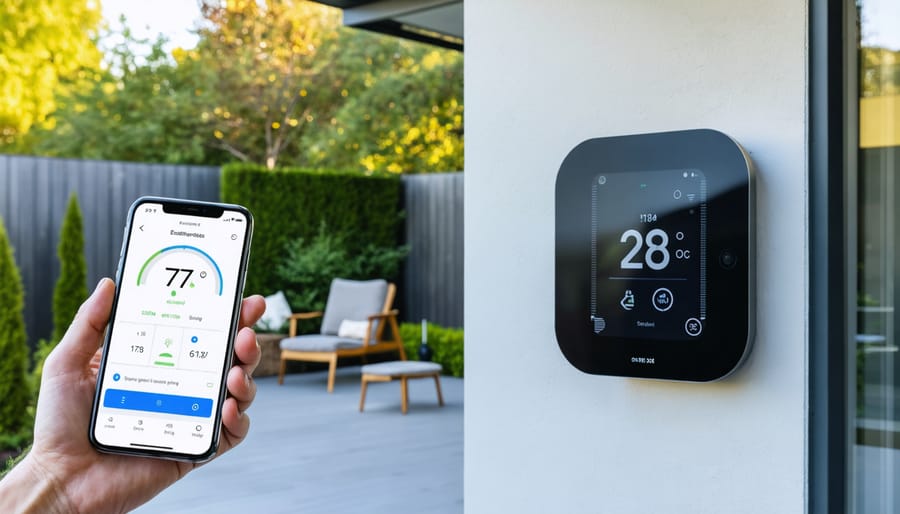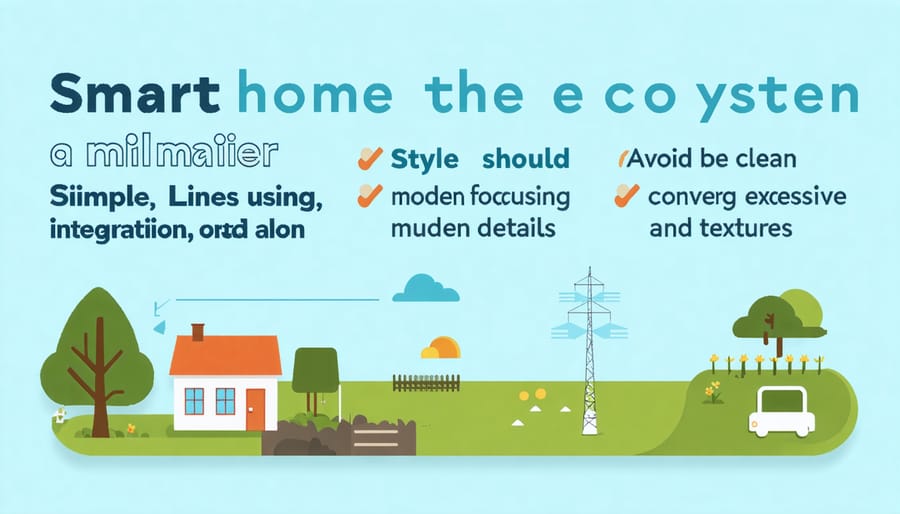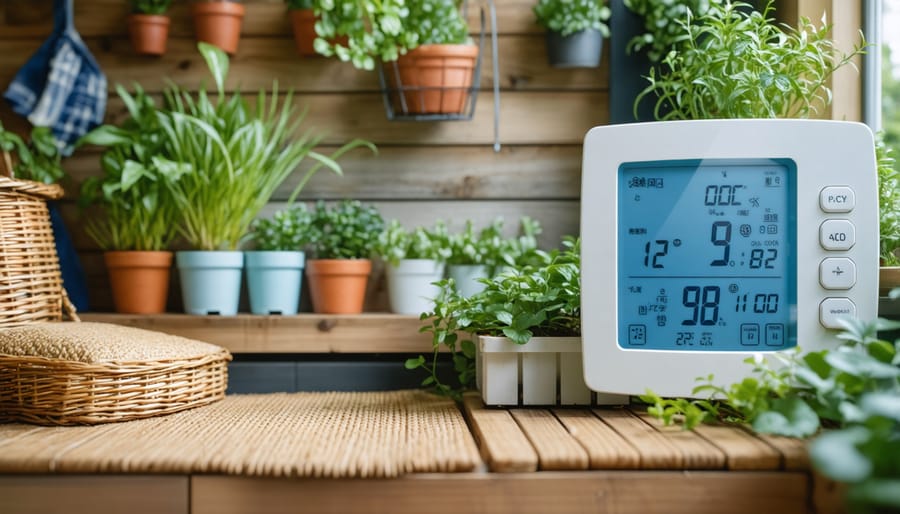Smart Outdoor Thermometers That Actually Make Your Life Easier

Transform your outdoor living spaces into a smart oasis with modern temperature monitoring technology. Smart outdoor thermometers have revolutionized how homeowners track environmental conditions, offering real-time data and smartphone notifications that help protect valuable outdoor equipment and enhance comfort in patios, gardens, and storage areas. These weather-savvy devices do more than just display temperature – they monitor humidity levels, track weather patterns, and even predict incoming storms, giving you complete control over your outdoor environment. Whether you’re maintaining the perfect greenhouse conditions, protecting sensitive equipment in your shed, or simply wanting to know the precise moment to fire up the grill, a smart outdoor thermometer serves as your personal weather station and environmental guardian. With easy installation, wireless connectivity, and robust weather resistance, these devices have become an essential tool for the modern homeowner who values precision and convenience in outdoor living.
How Smart Outdoor Thermometers Transform Your Space
Beyond Basic Temperature Readings
Modern outdoor smart thermometers do much more than just tell you the temperature. Many models track humidity levels, helping you protect sensitive outdoor equipment and prevent mold growth in your storage spaces. Weather prediction features use built-in barometric pressure sensors to alert you about incoming storms or significant weather changes, giving you time to secure outdoor furniture or close shed windows.
Smart home integration takes convenience to the next level. Connect your thermometer to popular platforms like Alexa or Google Home to get voice-activated temperature readings or set up custom alerts. Some models even work with your smart irrigation system, adjusting watering schedules based on humidity and temperature data.
Many users particularly appreciate the ability to monitor conditions remotely through smartphone apps. Whether you’re at work or on vacation, you can keep an eye on your property’s environmental conditions and receive instant notifications if temperatures fall below or rise above your set thresholds.
Protecting Your Outdoor Investments
Smart thermometers serve as vigilant guardians for your valuable outdoor investments. By monitoring temperature and humidity levels in sheds, gazebos, and storage spaces, these devices help prevent moisture damage, rust, and mold growth that could harm tools, furniture, and seasonal equipment.
Installing a smart thermometer in your outdoor structures allows you to receive instant alerts when conditions become potentially damaging. For example, if humidity levels spike in your garden shed, you’ll know it’s time to run a dehumidifier or improve ventilation before your power tools start showing signs of rust.
These devices are particularly valuable during seasonal changes. Whether you’re storing winter equipment during summer months or protecting delicate outdoor furniture in the off-season, smart thermometers help maintain optimal storage conditions. Many users report that early warning notifications have helped them save thousands in equipment and furniture replacement costs by addressing environmental issues before damage occurs.
Remember to place sensors at different heights within your storage space, as temperature and humidity can vary significantly from floor to ceiling.
Setting Up Your Smart Outdoor Thermometer

Choosing the Perfect Location
Selecting the right spot for your outdoor smart thermometer is crucial for accurate readings and optimal performance. Mount the device at least 5 feet above the ground and away from direct sunlight to prevent false temperature readings. Choose a location that’s sheltered from heavy rain and strong winds, but still allows for proper air circulation around the sensor.
Avoid placing the thermometer near heat sources like air conditioning units, dryer vents, or outdoor cooking areas, as these can skew temperature readings. Similarly, keep it away from reflective surfaces such as windows or metal siding that might affect its accuracy.
For best coverage, position the device within your Wi-Fi network’s range, typically within 100 feet of your router. If you’re monitoring multiple areas, consider installing additional sensors in different zones. Many smart thermometers allow you to connect multiple units to create a comprehensive monitoring system.
For shed owners, mount the device on an interior wall away from doors to get the most accurate readings of your storage environment. Remember to check your manufacturer’s specific guidelines, as some models may have unique placement requirements.
Connecting to Your Smart Home
Integrating your outdoor smart thermometer with your existing home automation setup is straightforward and can enhance your overall smart home experience. Here’s how to get started:
First, ensure your thermometer is compatible with your current smart home platform, whether it’s Alexa, Google Home, or Apple HomeKit. Most modern outdoor smart thermometers connect via Wi-Fi or Bluetooth, making them easy to pair with your home network.
Begin by downloading the manufacturer’s app on your smartphone and creating an account if necessary. Once installed, enable location services and Bluetooth on your phone. Place your thermometer within range of your home’s Wi-Fi network, typically within 150 feet of your router for optimal connection.
Follow the in-app instructions to add your device, which usually involves pressing a sync button on the thermometer and waiting for your phone to detect it. Once connected, you can link it to your existing smart outdoor lighting system and other connected devices.
Consider creating automation routines that work together. For example, set your outdoor fans to turn on automatically when the temperature reaches a certain threshold, or have your smart irrigation system adjust watering schedules based on temperature readings.
Pro tip: Place your thermometer away from direct sunlight and heat-reflecting surfaces to ensure accurate readings. Most units come with mounting hardware, but you might want to consider a weather shield for additional protection.
Remember to check for firmware updates regularly through the app to ensure your thermometer maintains optimal performance and security features.

Real-World Applications
Protecting Your Garden Equipment
A smart outdoor thermometer can help you protect your outdoor equipment by monitoring storage conditions that could impact their longevity. Many garden tools and power equipment are sensitive to temperature extremes, which can affect their performance and lifespan.
By installing a smart thermometer in your storage shed or garage, you’ll receive alerts when temperatures approach levels that could damage your equipment. For example, extreme cold can cause metal tools to become brittle or batteries to lose charge, while excessive heat might compromise plastic components or cause fuel degradation in gas-powered tools.
Set temperature thresholds based on your stored items’ requirements. Most power tools and batteries perform best between 40°F and 80°F. When temperatures fall outside this range, take preventive action by adding insulation, using a space heater, or improving ventilation as needed.
Track temperature patterns throughout the seasons to identify potential problem areas in your storage space. This data helps you make informed decisions about equipment placement and storage solutions. Consider creating separate zones for temperature-sensitive items and using the thermometer’s historical data to optimize your storage layout.
Remember to check humidity levels too, as many smart outdoor thermometers include this feature. High moisture levels can lead to rust and corrosion, particularly on metal tools and equipment parts.
Climate Control for Storage Spaces
Maintaining proper temperature control in outdoor storage spaces is crucial for protecting your valuable belongings. Smart thermometers designed for outdoor use can be invaluable tools for monitoring and managing these environments, especially when implementing effective seasonal storage solutions.
Place your smart thermometer in a central location within your storage space, ideally at mid-height where air circulation is optimal. Many modern units feature remote monitoring capabilities, allowing you to check temperatures from your smartphone and receive alerts when conditions fall outside your desired range.
For shed storage, aim to maintain temperatures between 50-85°F (10-29°C) to protect sensitive items like power tools, paint, and electronics. During extreme weather, use your smart thermometer’s data to determine when to add extra insulation or ventilation. Some models even integrate with smart outlets to automatically control fans or space heaters based on temperature readings.
Consider installing multiple sensors in larger storage areas to monitor temperature variations in different zones. Place them near vulnerable items like gardening chemicals or temperature-sensitive equipment. Many smart thermometers also track humidity levels, which is essential for preventing moisture damage and mold growth in your stored belongings.
Remember to check your thermometer’s readings regularly and adjust your storage organization based on the data collected. This proactive approach helps prevent damage and extends the life of your stored items.

Maintenance and Troubleshooting
To keep your outdoor smart thermometer working reliably, regular maintenance is essential. Clean the sensor area gently with a soft, dry cloth every few months to ensure accurate readings. If your device is battery-powered, replace the batteries before they’re completely drained to prevent data loss and connection issues. For solar-powered units, wipe the solar panel periodically to maintain optimal charging.
Watch out for common issues like weak Wi-Fi signals, which can cause intermittent readings. If you notice connection problems, try moving your router closer or installing a Wi-Fi extender. When your thermometer shows unusual readings, check for direct sunlight exposure or nearby heat sources that might affect accuracy.
During extreme weather, ensure your device is properly sheltered while maintaining adequate airflow. Most units are weather-resistant, but prolonged exposure to harsh elements can impact performance. Check the mounting hardware regularly and tighten any loose screws or brackets.
If your app stops receiving updates, try these quick fixes: refresh the app, check your internet connection, or restart both the app and thermometer. For persistent problems, consult your user manual for the reset procedure. Many issues can be resolved by simply removing and reinstalling the batteries or performing a factory reset.
Remember to update your thermometer’s firmware when available, as these updates often include important performance improvements and bug fixes.
An outdoor smart thermometer is more than just a temperature gauge – it’s your watchful companion in maintaining the perfect environment for your outdoor spaces. By providing real-time temperature monitoring, custom alerts, and remote access through your smartphone, these devices offer peace of mind and practical control over your outdoor living areas. Whether you’re protecting valuable equipment in your shed, monitoring a greenhouse, or ensuring your outdoor entertaining space stays comfortable, a smart thermometer proves invaluable. The minimal investment in this technology can prevent costly damage from extreme temperatures while making outdoor space management effortless. Take the step toward smarter outdoor living by adding this essential tool to your home automation system – your outdoor spaces and stored belongings will thank you for it.

